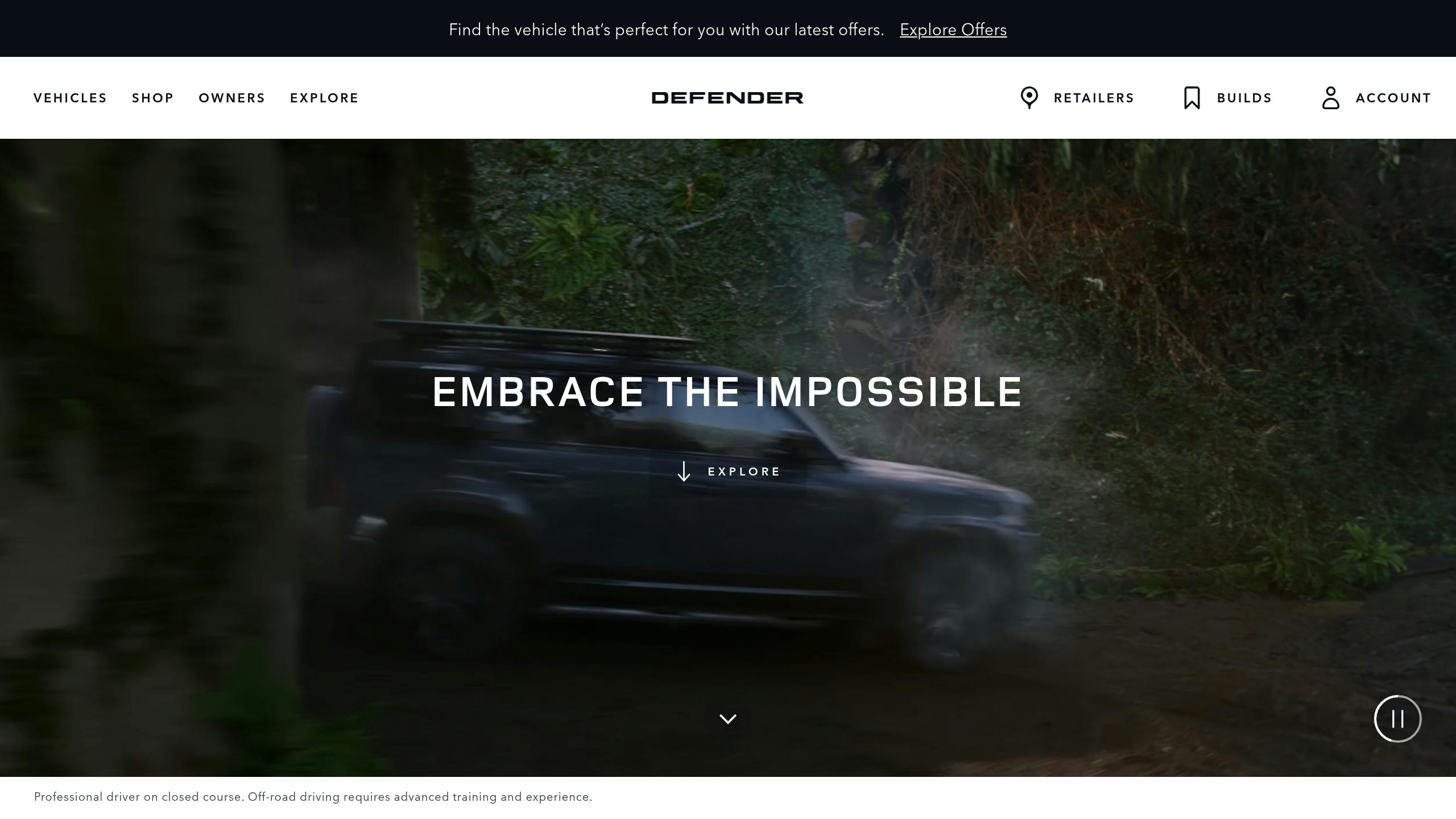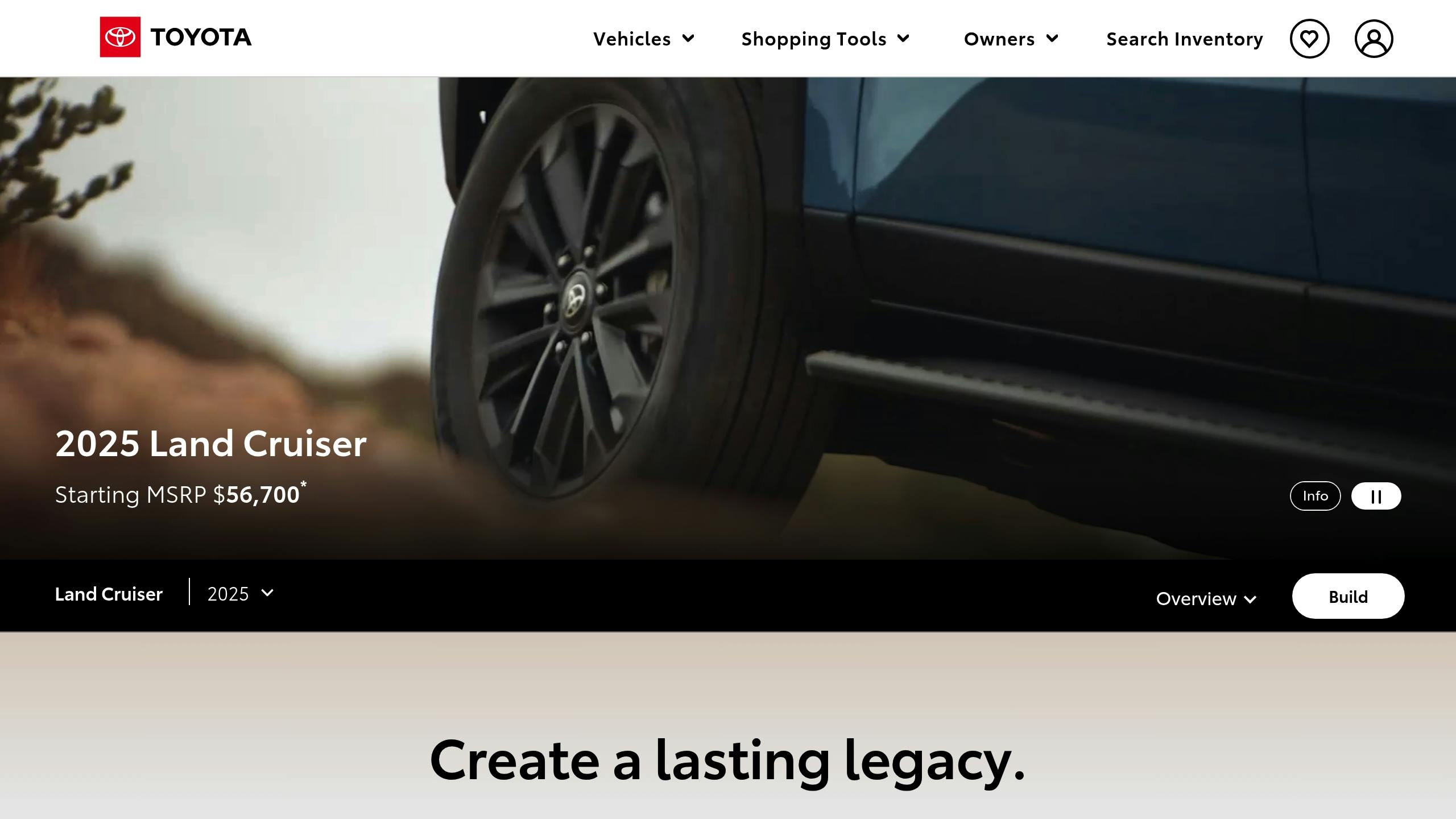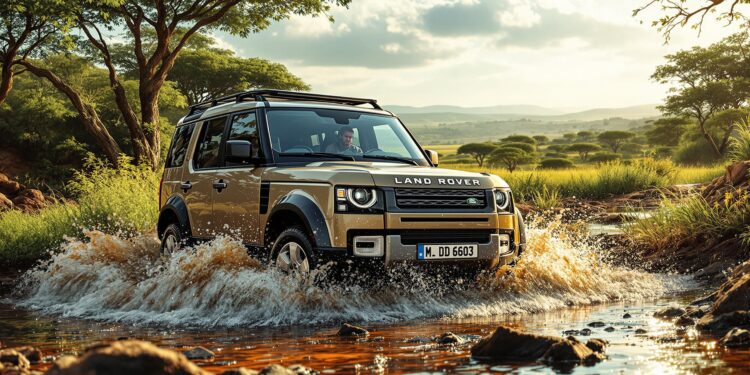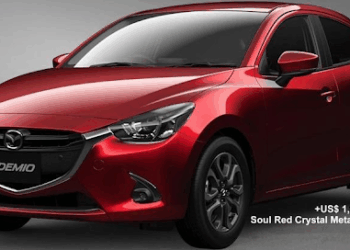Kenya’s roads demand vehicles that excel in both urban and rugged terrains. With 45% of roads unpaved and frequent flooding, the choice of vehicle matters. The Land Rover Defender and Toyota Land Cruiser are top contenders, but the Defender stands out for its advanced terrain management, higher wading depth (900mm), and ground clearance (291mm), making it ideal for Kenya’s unique challenges.
Key Highlights:
- Land Rover Defender:
- Wading Depth: 900mm
- Ground Clearance: 291mm
- Advanced Terrain Response System (automatic)
- Expanding service network in 8 counties
- Better suited for floods and off-road adventures
- Toyota Land Cruiser:
- Wading Depth: 700mm
- Ground Clearance: 220mm
- Multi-Terrain Select System (manual)
- Extensive service network (12+ centers)
- Retains 65% resale value over 5 years
Quick Comparison:
| Feature | Land Rover Defender | Toyota Land Cruiser |
|---|---|---|
| Wading Depth | 900mm | 700mm |
| Ground Clearance | 291mm | 220mm |
| Terrain System | Terrain Response 2 (Auto) | Multi-Terrain Select (Manual) |
| Service Network | 8 counties | 12+ centers |
| Resale Value | Retains 55-60% | Retains 65-70% |
The Land Rover Defender excels in flood-prone areas and rugged trails, while the Toyota Land Cruiser offers better resale value and a larger service network. Both are strong choices, but the Defender’s engineering makes it better suited for Kenya’s challenging road conditions.
Land Cruiser 300 Series vs Patrol vs Defender 2022 comparison review
1. Land Rover Defender Features

The Land Rover Defender is built to handle Kenya’s tough terrain with advanced engineering and durable construction. Its aluminum body, reinforced with steel underbody protection, is designed to withstand the challenges of rural Kenyan roads.
For Kenya’s seasonal and environmental demands, the Defender offers impressive capabilities:
| Feature | Specification |
|---|---|
| Wading Depth | 900mm |
| Ground Clearance | 291mm |
| Suspension Travel | 500mm (front) / 600mm (rear) |
These specs translate into practical performance. For instance, Land Rover’s smart suspension adjusts to road surfaces, reducing vibrations on rough roads like those near Mount Kenya [1]. The elevated seating design provides excellent visibility, which is especially useful for wildlife viewing – key for tourism operators and conservation teams [1].
The Defender also prioritizes safety with features tailored for Kenya’s conditions. Wading depth sensors help prevent engine damage during sudden floods, while Hill Descent Control ensures safe navigation of steep slopes, such as those in the Rift Valley [3]. These systems address major safety concerns in rural Kenya, including flash floods and steep terrain, which are leading causes of accidents (KNBS 2024).
The Defender’s reliability in Kenya’s varied landscapes has made it a favorite among luxury safari operators, with 78% now including Defenders in their fleets [4]. For example, Sand House Travel reports 40% fewer breakdowns since switching to Defenders, contributing to a 34% increase in their regional sales [2][4]. This growing adoption positions the Defender as a strong competitor to Toyota’s well-established safari vehicles.
sbb-itb-e5ed0ed
2. Toyota Land Cruiser Features

The Toyota Land Cruiser is equipped with a Multi-Terrain Select (MTS) system designed to handle mud, sand, and rocky surfaces. This makes it well-suited for Kenya’s rural roads and wildlife reserves.
The Toyota Land Cruiser uses Multi-Terrain Select (MTS) and Crawl Control systems optimized for mud, sand, rock, and uneven surfaces – critical for Kenya’s rural roads and wildlife reserves.
Its reinforced steel ladder-frame construction and high-clearance suspension (220mm ground clearance) provide durability and off-road capability. For Kenyan buyers, the Land Cruiser also offers practical benefits in terms of maintenance and service:
| Maintenance Item | Cost (KSh) |
|---|---|
| Air Filter | 8,500 |
| Brake Pad Set | 32,000 |
| Service Centers Available | 12+ |
With a payload capacity of 1,150kg, the Land Cruiser is ideal for safari operators needing to transport supplies across reserves. However, its wading depth of 700mm can present challenges during Kenya’s rainy season, particularly in flood-prone areas like the Tana River Basin.
The 4.5L V8 diesel engine delivers a fuel efficiency of 8-10 km/L, which is essential for covering Kenya’s long distances efficiently.
Safety features include the Kinetic Dynamic Suspension System (KDSS) and a Multi-Terrain Monitor with underbody cameras. These systems are especially useful for avoiding wildlife collisions in conservation areas and navigating unpredictable road conditions.
Economically, the Land Cruiser holds its value well, retaining about 65% of its worth after five years. This is a significant advantage in Kenya’s cost-conscious market, further supported by Toyota’s extensive service network, which minimizes vehicle downtime.
Price Overview
| Condition | Price Range (KSh) |
|---|---|
| New (fully imported) | 18M – 25M |
| Used (2018 model) | 9M – 14M |
Considering its maintenance costs, durability, and resale value, the Land Cruiser is a practical choice for high-mileage users like tour operators. However, its limitations in flood-prone areas underline differences that will be explored in the upcoming comparison.
Direct Comparison: Strengths and Limitations
When evaluating the Land Rover Defender and Toyota Land Cruiser for Kenyan roads, several factors influence their performance in various driving scenarios. Here’s how they compare based on testing and real-world data:
| Feature Category | Land Rover Defender | Toyota Land Cruiser |
|---|---|---|
| Terrain Management | Terrain Response 2 (Automated) | Multi-Terrain Select (Manual) |
| Fuel Efficiency | 7.2-10.9L/100km | 8.5-12L/100km |
| Seating Configuration | 7 seats (tiered rear rows) | 8 seats (standard) |
| Cargo Space | 1,075L | 1,150kg payload |
| Service Network | Limited dealers | 12+ service centers |
These differences play out in Kenya’s unique driving conditions:
Land Rover’s smaller service network is gradually expanding, now reaching 8 counties, which helps address concerns for premium buyers. The Defender’s Adaptive Cruise Control and automatic emergency braking add extra safety, especially for night driving on Kenya’s unlit highways. According to KNBS 2024 data, these features are critical for reducing rural accident risks. On the other hand, the Land Cruiser’s widespread service network and easy access to parts make it a practical choice, especially in remote areas.
Resale value is another consideration. Land Cruisers typically retain 65-70% of their value compared to the Defender’s 55-60%, though Auto24 Africa notes the gap is narrowing as confidence in Land Rover’s durability grows. The Defender’s superior 900mm wading depth is a game-changer during flood seasons in areas like the Tana River Basin, offering an edge over the Land Cruiser.
For everyday use, the Defender’s stadium-style seating provides better visibility and comfort, especially for family safaris. However, the Land Cruiser’s higher seating capacity might appeal to larger groups. While the Land Cruiser’s simpler mechanical setup is ideal for remote operations, the Defender’s advanced terrain management system is better suited for Kenya’s evolving road infrastructure.
Both vehicles shine in different areas, but the Land Rover Defender stands out with its advanced terrain capabilities, greater wading depth, and modern safety features, making it a strong contender for Kenya’s diverse driving needs.
Conclusion
Our analysis highlights that Land Rover models are well-suited for Kenya’s varied road conditions. Their engineering and features make them a strong option for both city streets and rural areas.
For drivers covering significant distances on unpaved roads (over 30% of their mileage), Land Rover proves to be a practical choice [4]. Although maintenance costs are higher – averaging KSh 2.8M over five years, about KSh 900,000 more than Toyota equivalents – this is partly balanced by strong resale values. Land Rovers retain 65% of their value in Kenya, and new Defenders are 15-20% cheaper than comparable Land Cruisers when purchased through local specialists [4].
With its terrain management capabilities, advanced safety systems, and reliable performance, Land Rover stands out as a solid option for Kenya’s challenging road conditions, even with the higher upkeep costs.
Related Blog Posts
- 10 Weekend Road Trip Routes from Nairobi
- Ultimate Guide to Off-Road Safety in Kenya
- Ultimate Guide to Eco-Driving in Kenya
- Top 5 Brake Care Tips for Kenyan Drivers




